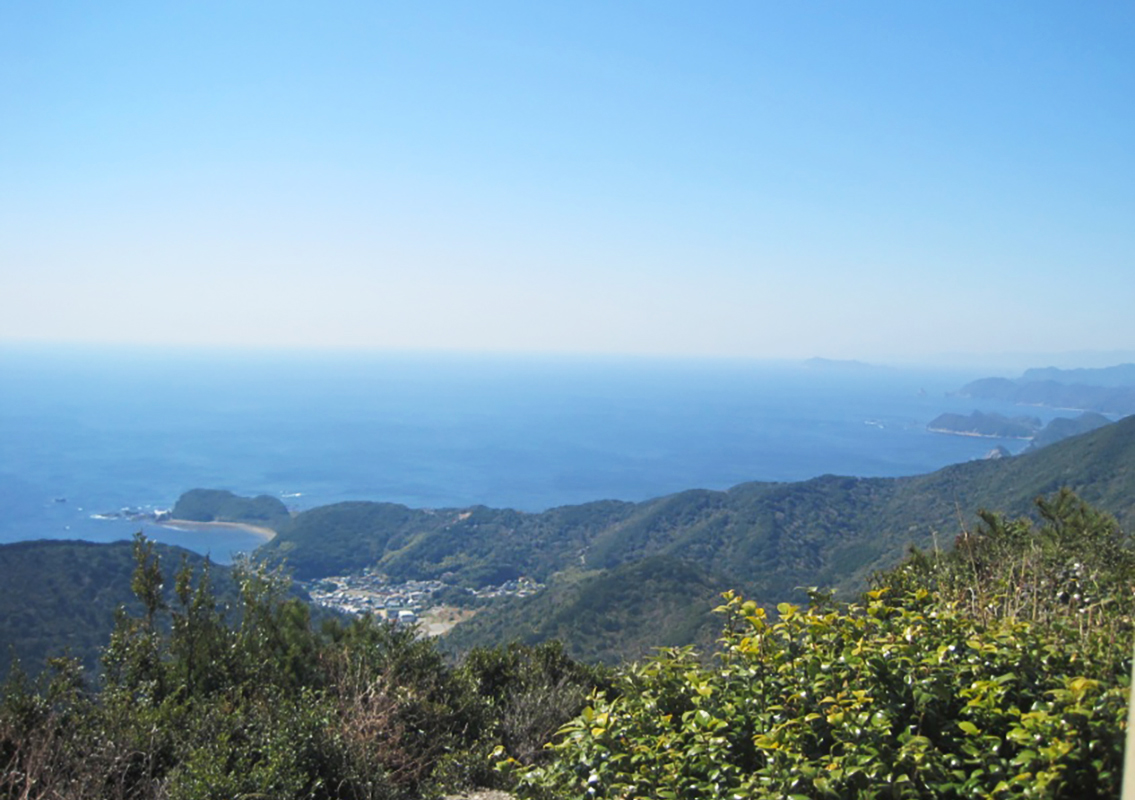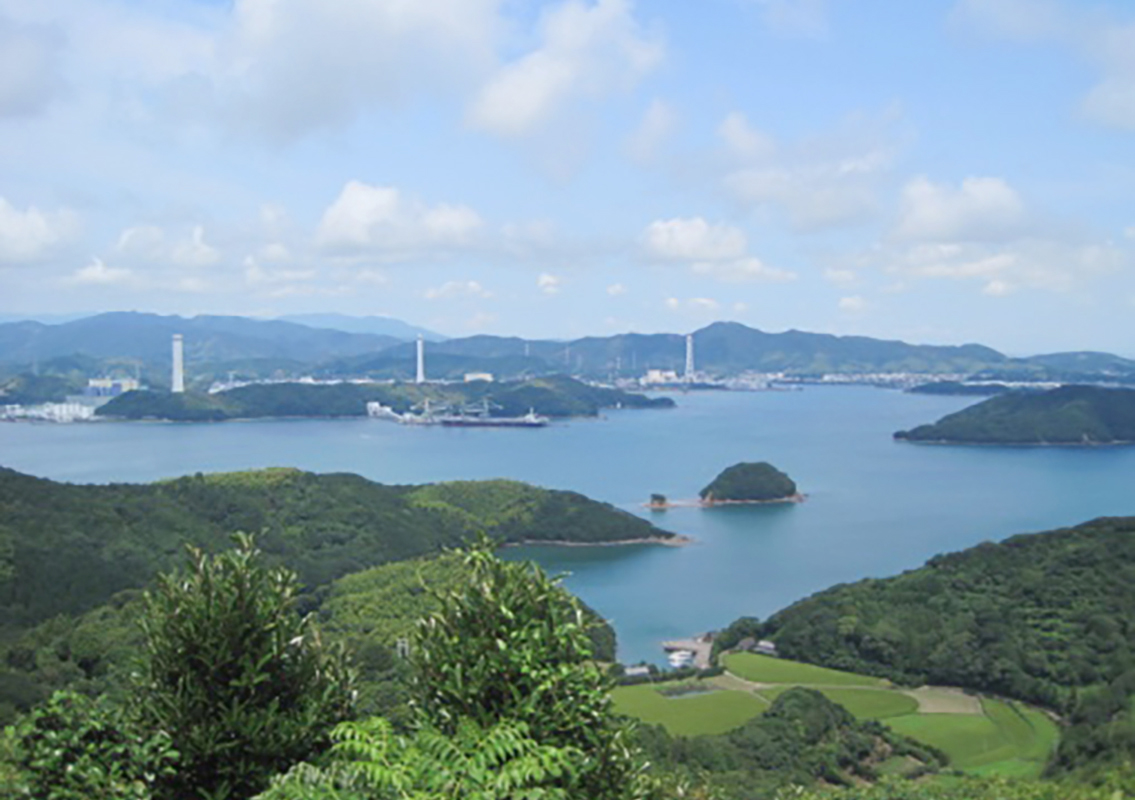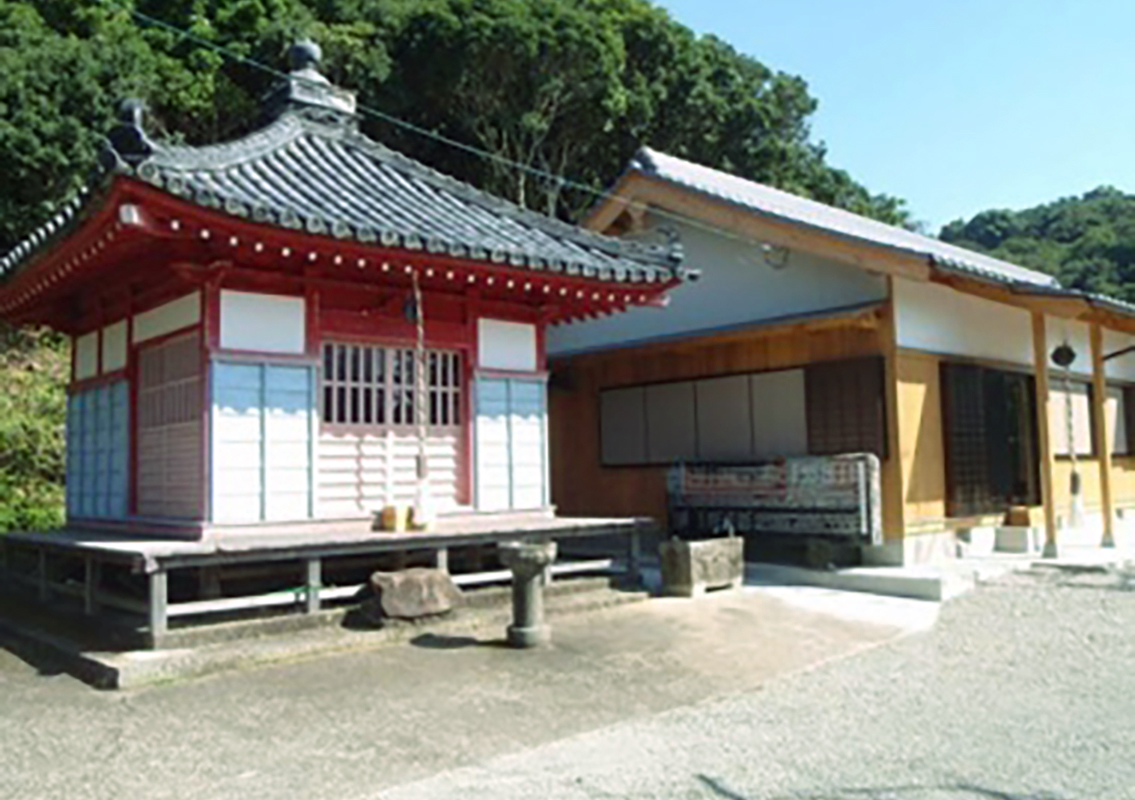Mt. Myojin Ounabara Path

Mt. Myojin Ounabara Path
If you go from Fukui to the mountains with bamboo groves, you will come to Sendogatani, a small village surrounded by mountains. Climbing the idyllic farm road along the valley, Tachibana Bay will soon appear and you will see the chimney of a power plant and Mt. Tsunomine behind. As you approach the pass, the Pacific Ocean appears below and the horizon forms an arc. Further toward Mt. Myojin, there are several wireless relay stations. Climb through an endless ubame oak tree forest and you will reach the summit of Mt. Myojin, surrounded by stone walls. There is a panoramic view of the peninsula leading to Cape Kamoda, the coastline of Abe and Yuki, and the coastline far from Cape Muroto. You will reach the town of Abe through ubame oak and camellia forests.
Mt. Myojin Ounabara Path(9.3km)

 Spots to photograph
Spots to photograph
If you wish to receive a certificate, please take a photo that includes yourself at the designated photo point for each course.
Nearby sightseeing spots

-
1
 Mt. Myojin
Mt. MyojinIt is known for offering a good view in Muroto-Anan Kaigan Quasi-National Park. From the summit of elevation 441.6m, you can see the Kii mountain range across the Kii waterway to the east, the Anan city area to the north, the Tsurugi mountain range to the northwest, and the Anan coast with its varied landscape to the southwest. If the weather is nice, you can get a panoramic view of Cape Muroto. Many tourists visit because cars can reach the top of the mountain. The Mine Shrine at the top of the mountain enshrines a god of big catches. In addition, there are many types of plants such as ubame oak trees, Rhododendron, Kuma bamboo grass, Japanese andromeda, and holly on the mountainside. There are also many animals such as wild boar, rabbit, and deer.
-
2
 Muroto-Anan Kaigan Quasi National Park
Muroto-Anan Kaigan Quasi National ParkThis is a coastal park that straddles both Tokushima and Kochi prefectures, and designated in 1964, it dusts an area of 6,225 ha. The designated area is a 200 km long coastal area from the Awashima coast in Anan City to Cape Hane in Kochi Prefecture. Tachibana Bay is a ria coast, where you can enjoy a variety of sceneries such as many islands (of various sizes), land-tied islands (islands connected by sandbars), and caves. The area between Cape Kamoda, Yuki, Hiwasa, and Mugi is a straight fault coast, and the Senba Coastal Cliff reaches a height of 240m. Also well-known is the spawning of loggerhead turtles on Ohama Beach. From Mugi southward, the scenery changes to Yasaka Yahama, Mitoko, and other fine-textured locations. Cape Muroto has many marine terraces. subtropical forests such as Angiopteris lygodiifolia, Japanese sea fig as well as coastal plant communities such as ubame oak and Pittosporum tobira clusters create a tropical landscape.
-
3
 Tachibana Bay
Tachibana BayThe rias coast is sandwiched between the Tsubaki Peninsula in the south and the coast of Ogata in the north. Large and small islands such as Kokatsu Island, Takashima, Nagashima, Udojima, Urume Island, Ubajima, and Bentenjima are scattered in the bay. A scenic spot resembling an ink painting is called "Awa no Matsushima".
-
4
 Cape Kamoda
Cape KamodaThis is the easternmost cape in Shikoku, sandwiching the Kii Waterway and facing Cape Hino in Wakayama Prefecture. There is a lighthouse at the tip, and the wonderful view from there reveals Ishima, Maejima, and Tanagojima islands floating on the eastern sea, and a steep cliff layer and Kazanashi Forest below. The coast around here is famous for loggerhead turtles landing to spawn from July to August, and is designated as a natural monument of the prefecture "Cape Kamoda's loggerhead turtle breeding ground".
-
Awa Navy
At the location of the current Tsubakidomari Elementary School, which overlooks Tsubakidomari Bay near the tip of the Tsubaki Peninsula, are the ruins of Shokaku Castle, which was the residence of Jingobei Mori, the general commander of the Awa Navy. During the feudal era, Hachisuka Iemasa prized the mighty naval power of the Mori clan, so he made it independent of other military forces and put it under the immediate control of its feudal lord. The capacity of the Awa Navy was extremely important even within the Tokugawa Shogunate, and Ieyasu reportedly valued Hachisuka because of this Navy. From the 4th generation Murashige, they are called Jingobei for generations. The activities of the Awa Navy during the Japanese invasions of Korea by Hideyoshi, the Japanese invasion of Keicho, and the Battle of Osaka after Hideyoshi's death were remarkable. In the second Japanese invasion of Korea, while most of the Japanese Navy suffered a big defeat, only the Awa Navy continued to win consecutive battles and fully demonstrated their abilities without regret. After the siege of Osaka, Ieyasu and Hidetada received letters of commendation and were presented battle surcoats for their military service.
-
5
 Omizudaishi
OmizudaishiKukai reportedly once practiced esoteric Buddhism on this hallowed ground. He is even now still worshiped by people who work at sea as the god of maritime safety. The shrine is located on a hill with an altitude of 50 m overlooking the Pacific Ocean below in the south and the scenic Cape Kanokubi in the southwest. Clear water turns into a two-row waterfall coming out of the rocky area beside the shrine, and pours into the sea. It is worshiped as sacred water.



